Hornet: Naval Strike Fighte
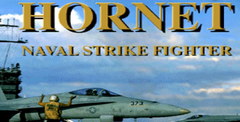
| a game by | Spectrum Holobyte |
| Platform: | PC (1993) |
| User Rating: | 8.0/10 - 2 votes |
| Rate this game: | |
| See also: | Flight Games |
When Falcon 3 was launched three years ago, it was a ground-breaking product sporting one of the most realistic flight models ever seen. Today, it still stands proud and tall and is a challenging place upon which some of the 'more advanced' simulators have foundered.
Although now ageing, it still generates great excitement through its fast-paced combat sequences, which are made more realistic through the implementation of the Padlock View. However, the best reason for shelling out your hard-earned dosh on the game is to experience the pioneering Electronic Battlefield System (ebs), which allows up to six players on a network, either to fly cooperatively, or in a head-to-head shoot-out.
In order to further ebs, Spectrum Holobyte developed Mig 29 as either an add-on to Falcon 3 or as a stand-alone product. It proved itself to be a superb aircraft to fly. with all the quirks of a non-fly by wire aircraft - difficult to control and easy to crash.
So what's new?
The latest addition to the ebs stable is the Hornet fi8 module. This is a versatile module which can be used with either Falcon 3 or stand-alone Mig 29, or both.
Originally code-named YF-17, the Hornet competed in 1974 against the YF-16 (Falcon) for purchase by the us airforce in the acf lair-combat fighter) and lwf (light-weight fighter) programmes. The yf-i6 was chosen by the airforce and became the fi6 and, after further development, the YF-17 (which was crap) became the fi8 and was purchased by the navy. Hornet Naval Strike Fighter will be sold in Europe by MicroProse. The game reviewed here is the American version, but it's unlikely that there will be any major changes in the version that appears in European territories.
Two's company, four's a gang bang
The first challenge upon receipt was to load Hornet onto the four pcs being used for the PC Game Zone 'Head-To-Head Challenge' at the Computer Shopper Show. We already had Falcon 3 and Mig 29 running successfully (admittedly, this was following six hours of network configuration) and so, with much excitement (I know I know, it's pathetic), the installation commenced.
In a manner similar to the Mig 29 module, Hornet begins by loading patches (that's techno-speak for bug fixes) for Falcon 3 and/or Mig 29. Following patching, the main Hornet program is loaded from a single high-density floppy.
Some short time later we had 5.5 mb less disk space and f18 to-head against Mig 29, briefly... and then 'CAUTION' 'CAUTION'... The old adage rtfm (Read The F'ing Manual) sprang unbidden to mind as my Hornet spiralled dangerously earthward with me strapped inside the flame-filled cockpit... 'sorry Ginger, you'll have to fly on without me'...
Yes, in the fi8 we have those wonders of ergonomic space-saving, mfds or Multi-Function Displays. These provide you with a plethora of read-outs. You can have them either all at once at the expense of the hud using the 'knees-down' view, or you can toggle the top two mfds to show the read-out of your choice - Threat Warning, Radar, Engine Management.
If you have Thrustmaster fcs/wcs you can configure the Top Hat so that left and right movements cause the left and right mfds to change. This is a nice 'hands-free' facility which beats the hell out of knees-down view. There is also a third multi-function display called the Horizontal Situational Indicator.
This is basically a navigational aid, which can display either a navigational compass, a colour map or both of them together, which is altogether a far more usable option. With the two devices coupled together you'll have the ability to fly completely head down, that is assuming that you are completely devoid of life, but why not try it, it's fun (not!).
Most missions put you on the deck of a carrier to start with, necessitating the use of the catapult launch. In reality, what this means is full burner, pop the rubber band and you're skyward at a rapid rate of knots. The only thing to remember is to put the gear up before it's ripped off.
As a naval aircraft, the provision of an aircraft carrier as a launch platform was somewhat essential. The downside of this is, of course, the fact that you do have to land back on it following your successful mission.
The chances of doing this and retaining some credibility with the guys in the ward room have been enhanced by the addition of the catcc (Carrier Air Traffic Control Centre) and, more importantly, the lso (Landing Signal Officer) who will attempt to talk you down towards the deck with a series of atmospheric messages which probably really do help. Then, just when you really need the lso to soothe your battered plane in for final touchdown, he hands you over to a meatball (it's true I tell you!). The meatball being an optical device on the carrier deck against which you adjust your glide slope for landing. And hey, it really works! (Well maybe with practice.) So, between the lso and the meatball, all you really have to do is remember to drop your gear and arrestor hook and then Robert is your mother's brother, back for Buds in the bar.
Sadly, the carrier is the only vessel represented in what would otherwise be a naval task force or fleet. The reasons behind this are apparently technical. However, it does mean that the carrier has been made invulnerable to attack as would be the case if it had a fleet wrapped around it. This does, of course, remove one of the options available to you when you come back from a mission with ordnance strapped to your plane. I mean, if it won't sink, what's the point in shooting it?
As indicated in the title, the primary role is that of strike aircraft, so the missions tend to be biased in that direction. What is surprising is the high performance of the aircraft. Even when fully laden with Mavs mk82S and aamrams, being bounced on the way to the primary target presented no problems. The response and turn rate remained fairly lively where the fi6 pilot would probably be hanging on silk if loaded up in a similar fashion.
In true air-to-air situations - when not cluttered with extraneous stores - the Hornet handles superbly and in most situations can out-turn both Mig 29 and Falcon with relative ease. This doesn't necessarily guarantee that you're able to survive for any great length of time, but you can hope.
The Hornet also has a radar-slaved gun sight, which sadly doesn't lock up your cannon onto your intended victim. However, it does provide information that can be 'used to optimise your kill probabilities.
All your weapons have minimum-range indicator which shows that you are too close for the selected weapon to work effectively - if at all. This is really useful if you are anything like me and shoot off missiles on the assumption that because you have 'tone', they'll hit.
There are in-built g limiters which prevent you from spreading your breakfast over the canopy. These can be disabled if you like to live on the edge, but for most people the prospect of 30 seconds' worth of black-out and then waking up in a burning wreck on the ground, are well worth attempting to avoid. Once over the target, the true strengths of the Hornet became apparent, for as a delivery platform it feels inherently far more stable than the Falcon. For once, 'servicing' the targets was actually enjoyable. This was also due to the fact that you can view both Ground-Mode radar and Maverick Camera simultaneously, which gives you more time to concentrate on target acquisition and removal.
Bosnia Hertsa... whatsitcalled
In line with current events, a new operational theatre has been added which presupposes American intervention in the former Yugoslavia, carrying out strikes on targets that threaten the peace process whilst preserving (i.e. not bombing) the civilian population centres. What this gives you is a lump of Yugoslavian Europe, complete with mountains and valleys to fly around/over/into. You can actually see the big hill that overlooks Sarajevo and whilst I couldn't find any artillery on top (just shows you how the media exaggerate) there were, however, lots of white apcs to shoot at the bottom of the hill, so all was not lost. Funnily enough, to even up the score it appears that Russia has sold dozens of Mig 29s to Serbia in exchange for hard currency. What this means is that if you fly your Mig 29 in Bosnia, you are flying for the Serbian airforce; a truly awesome prospect.
To summarise: Hornet Naval Strike Fighter is an essential purchase for any Falcon 3 or Mig 29 owner, as it broadens the opportunities available to you under Electronic Battlefield. The Bosnian theatre provides you with some great new terrain to fly into, and also allows you to answer the burning question of the day - would air strikes make any difference in Bosnia? (Answer - no, but they are fun to do.) Finally, the flight model is sufficiently different to ensure that you will need to learn to fly a new aircraft, and it is well worth the effort.
Download Hornet: Naval Strike Fighte

System requirements:
- PC compatible
- Operating systems: Windows 10/Windows 8/Windows 7/2000/Vista/WinXP

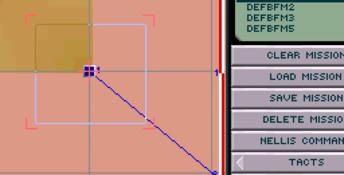
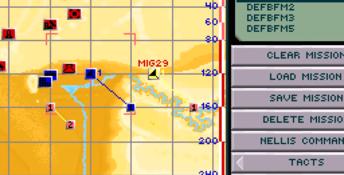
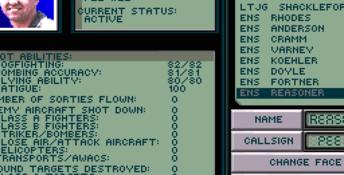
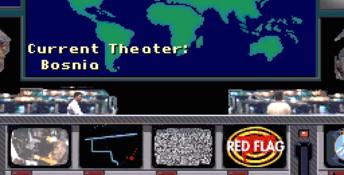
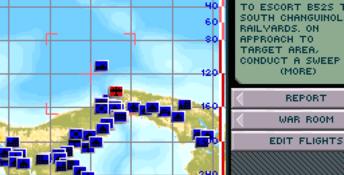
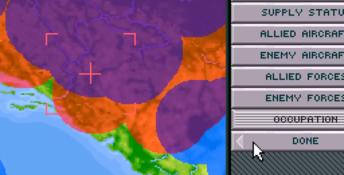
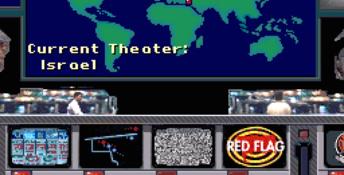
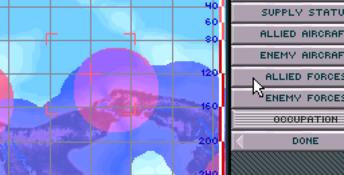
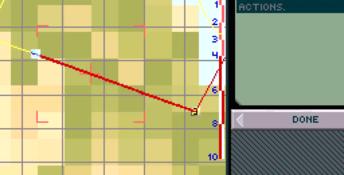

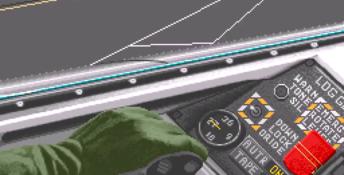

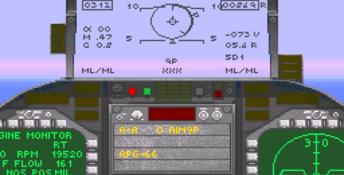
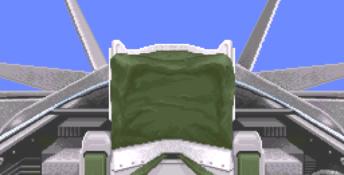
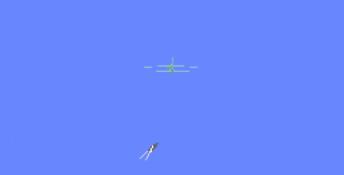


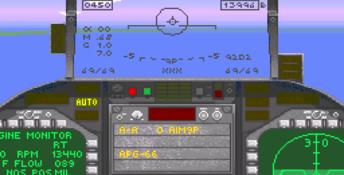
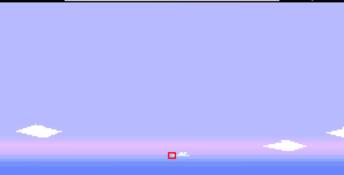
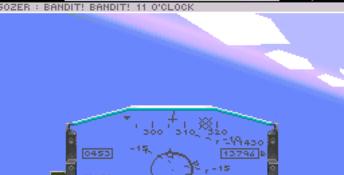
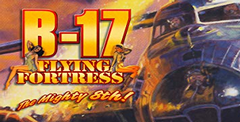 B-17 Flying Fortress: The Mighty 8th
B-17 Flying Fortress: The Mighty 8th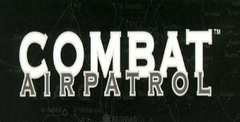 Combat Air Patrol
Combat Air Patrol
 Evasive Action
Evasive Action
 Fleet Defender
Fleet Defender
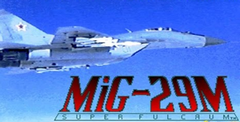 MiG-29M Super Fulcrum
MiG-29M Super Fulcrum
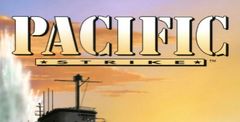 Pacific Strike
Pacific Strike